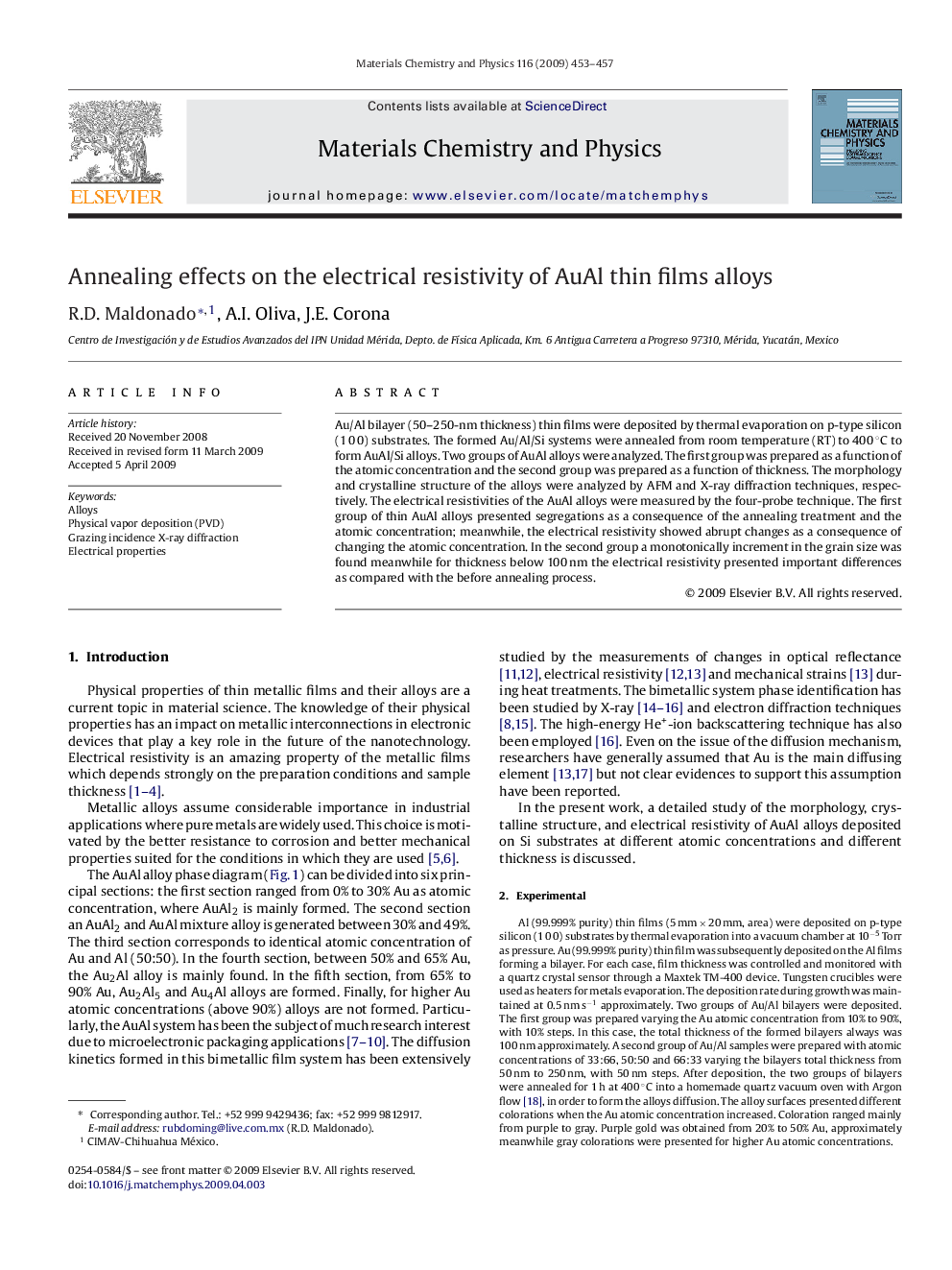| Article ID | Journal | Published Year | Pages | File Type |
|---|---|---|---|---|
| 1526575 | Materials Chemistry and Physics | 2009 | 5 Pages |
Au/Al bilayer (50–250-nm thickness) thin films were deposited by thermal evaporation on p-type silicon (1 0 0) substrates. The formed Au/Al/Si systems were annealed from room temperature (RT) to 400 °C to form AuAl/Si alloys. Two groups of AuAl alloys were analyzed. The first group was prepared as a function of the atomic concentration and the second group was prepared as a function of thickness. The morphology and crystalline structure of the alloys were analyzed by AFM and X-ray diffraction techniques, respectively. The electrical resistivities of the AuAl alloys were measured by the four-probe technique. The first group of thin AuAl alloys presented segregations as a consequence of the annealing treatment and the atomic concentration; meanwhile, the electrical resistivity showed abrupt changes as a consequence of changing the atomic concentration. In the second group a monotonically increment in the grain size was found meanwhile for thickness below 100 nm the electrical resistivity presented important differences as compared with the before annealing process.
